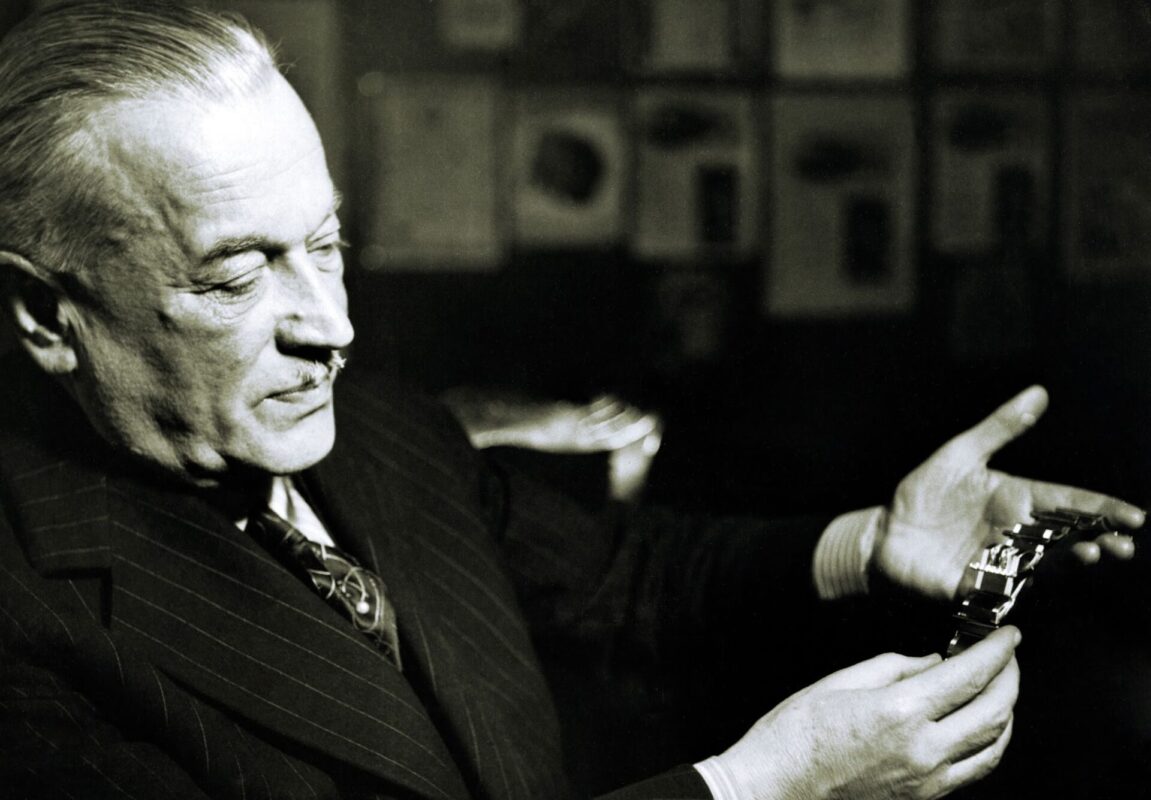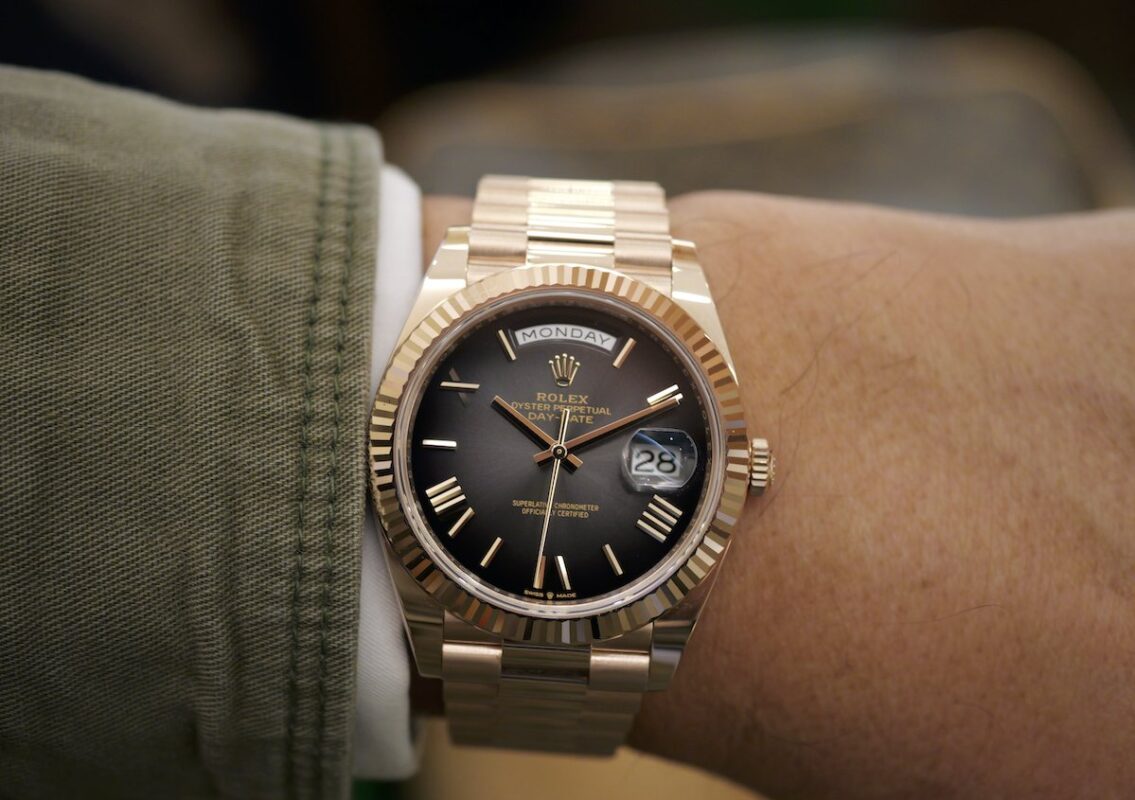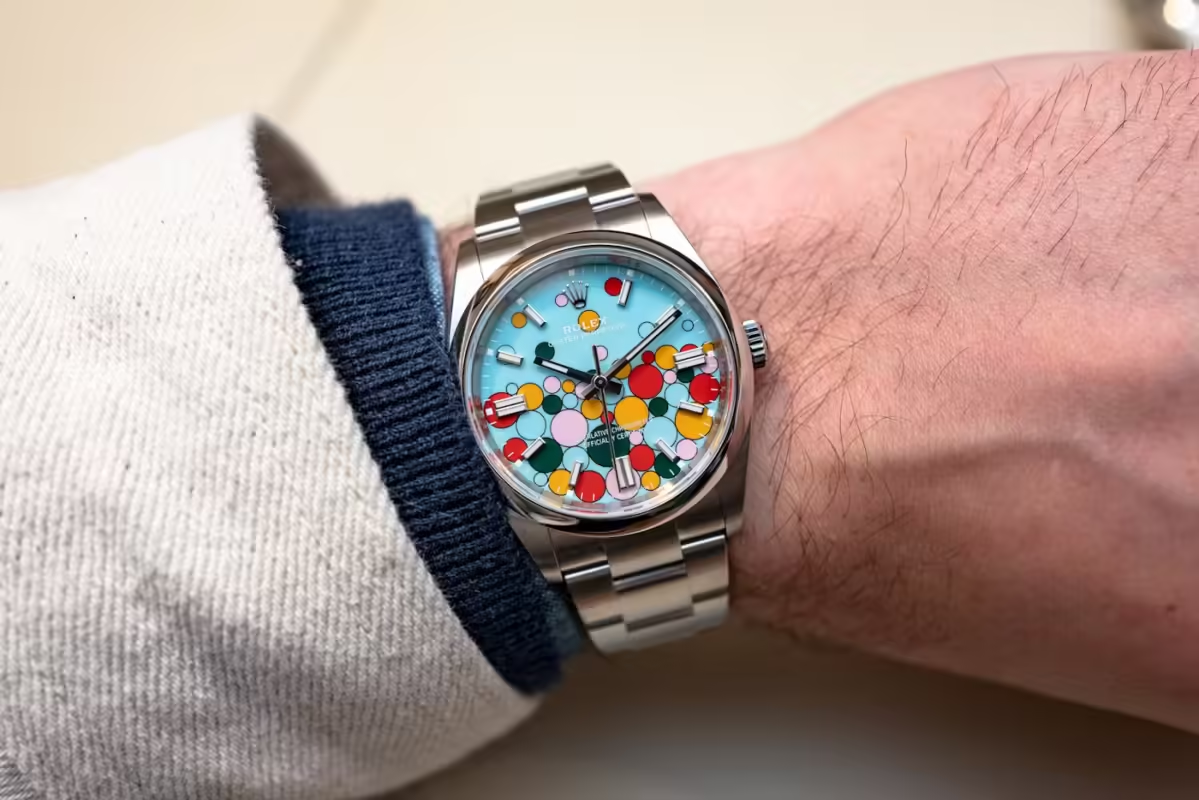Blog about Watches, Jewelry & Bags, Watch Blog
History of Rolex: A Legacy of Innovation and Excellence in Horology
Rolex, a name synonymous with luxury and precision, has established itself as a leader in the watchmaking industry through relentless innovation and craftsmanship. With a history spanning over a century, Rolex has not only set new standards in watchmaking but has also created iconic timepieces that symbolize prestige and elegance. In this article, Py-Luxury delves into the origins of Rolex, its evolution, significant achievements, notable collections, and the reasons behind its high price, providing a comprehensive understanding of what makes Rolex watches so special.
The Origin and History of Rolex
The Founding of Rolex
Rolex was founded in 1905 by Hans Wilsdorf and his brother-in-law Alfred Davis in London, initially under the name Wilsdorf & Davis. The company’s primary focus was on distributing high-quality timepieces. Hans Wilsdorf, a visionary in the field of horology, sought to create wristwatches that were not only precise but also reliable and stylish. In 1908, Wilsdorf decided to brand his timepieces under a name that was both memorable and easily recognizable, and thus “Rolex” was born.

The name “Rolex” was chosen for its ease of pronunciation in multiple languages and its distinctiveness. By 1914, Rolex achieved a significant milestone when it was awarded the A-Grade certification for precision by the Bienne Watch Evaluation Center. This certification marked Rolex as a leader in accuracy and quality, setting the stage for its future as a symbol of luxury and high standards.
Rolex’s Move to Switzerland
In 1919, Rolex relocated its headquarters to Geneva, Switzerland, a move that would prove crucial to its future success. Geneva was, and still is, a hub for watchmaking excellence, and this relocation allowed Rolex to benefit from the city’s rich horological heritage and skilled craftsmanship. The move also enabled Rolex to establish its own manufacturing facilities and refine its watchmaking processes.
Rolex’s Evolution Over the Years
Innovations and Milestones
Since its inception, Rolex has been at the forefront of watchmaking innovation. The brand’s commitment to pushing the boundaries of technology and design has resulted in several groundbreaking achievements:
- Oyster (1926): Rolex introduced the Oyster, the first waterproof wristwatch. This innovation was a significant leap forward in watchmaking, ensuring that the timepiece remained functional even when submerged in water.
- Oyster Perpetual Explorer (1953): The Explorer model was designed for adventurers and explorers. It was known for its robustness and accuracy, making it the perfect companion for those venturing into the unknown.
- GMT-Master (1955): The GMT-Master was the first wristwatch to display a second time zone, catering to the needs of pilots and travelers who needed to keep track of time in multiple locations.
- Oyster Perpetual Day-Date (1956): The Day-Date model introduced an automatic day and date display on the dial, making it a pioneering piece in the realm of timekeeping.
- Lady-Datejust Chronometer (1957): This collection was designed specifically for women, combining elegance with the precision Rolex is known for.
- Cosmograph Daytona (1963): Originally developed for motorsport, the Daytona became an iconic model due to its association with racing and its precise chronograph functions.
- Oyster Perpetual Sea-Dweller (1967): Designed for deep-sea divers, the Sea-Dweller featured enhanced water resistance, making it suitable for underwater exploration.
- Oyster Perpetual Explorer II (1971): The Explorer II was known for its durability and practicality, particularly in challenging environments.
- Sea-Dweller 4000 (1978): Building on the success of its predecessor, the Sea-Dweller 4000 further improved depth resistance and robustness.
- GMT-Master II (2007): An updated version of the GMT-Master, the GMT-Master II featured advancements in technology and design.
- Rolex Deepsea (2008): The Deepsea was engineered for extreme underwater conditions, showcasing Rolex’s expertise in creating robust and reliable timepieces.
- Oyster Perpetual Sky-Dweller (2012): This model introduced an annual calendar complication, adding a new level of functionality to Rolex’s offerings.
Rolex’s Major Achievements
Groundbreaking Innovations
Rolex’s history is marked by several key innovations that have shaped the world of horology:
- Oyster (1926): The Oyster was the first wristwatch to be completely waterproof, a major breakthrough that set a new standard for reliability and durability.
- Datejust (1945): This model was the first wristwatch to feature an automatic date change, a significant advancement in convenience and functionality.
- Oyster Perpetual Submariner (1953): The Submariner was the first wristwatch to be water-resistant up to 100 meters (330 feet), making it a crucial tool for divers.
- GMT Master (1954): The GMT Master introduced the ability to display a second time zone, catering to the needs of international travelers and pilots.
- Day-Date (1956): The Day-Date was the first watch to automatically display both the date and the day of the week, setting a new standard for practicality and luxury.
- Chronometer Certification (1910): Rolex was the first to achieve chronometer certification for a wristwatch, highlighting its commitment to precision and accuracy.
Rolex’s Iconic Collections
Rolex Day-Date

Launched in 1956, the Rolex Day-Date collection is renowned for its precision and readability. The Day-Date features a distinctive fluted bezel and comes with President bracelets in a variety of metals, including gold and platinum. The collection is celebrated for its sophisticated design and high functionality, making it a preferred choice for those seeking both luxury and practicality.
Rolex Lady-Datejust
The Lady-Datejust collection is specifically designed for women, combining elegance with Rolex’s signature precision. The watches in this collection feature exquisite dials adorned with diamonds and come with bracelets crafted from metals such as gold and platinum. The Lady-Datejust is known for its graceful appearance and is a popular choice among women who appreciate luxury and style.
Rolex Oyster Perpetual

The Oyster Perpetual collection is characterized by its classic design and robustness. The watches in this collection are available in various sizes and feature excellent water resistance up to 100 meters. The Oyster Perpetual models are equipped with the innovative Perpetual rotor, a self-winding mechanism that Rolex invented, ensuring reliable performance and convenience.
Rolex Yacht-Master
The Yacht-Master collection is designed for maritime enthusiasts and features multifunctional bezels that facilitate precise calculations. Equipped with the Calibre 4161 movement, the Yacht-Master is engineered to provide accurate timekeeping even in challenging conditions. This collection reflects Rolex’s commitment to creating specialized timepieces for various professions and activities.
Rolex Pearlmaster
The Pearlmaster collection is known for its opulence and sophistication. Each watch in this collection is crafted from 18ct white gold or Everose gold and features dials adorned with precious gemstones such as diamonds, sapphires, and rubies. The Pearlmaster is distinguished by its unique design and the meticulous craftsmanship that goes into each piece, making it a symbol of luxury and elegance.
Is a Rolex Watch Worth the Investment?
Advantages
- Design: Rolex watches are renowned for their exquisite design and meticulous craftsmanship. Each detail is carefully hand-finished to ensure the highest level of precision and quality. The aesthetic appeal of Rolex watches is matched by their functionality and durability.
- Value: As a high-end luxury brand, Rolex watches often command premium prices. The investment in a Rolex timepiece is not just about owning a watch but also about acquiring a piece of horological history. Limited edition models and vintage Rolex watches can appreciate in value over time, making them desirable for collectors.
- Materials: Rolex uses only the finest materials in its watches, including diamonds, solid gold, and platinum. These high-quality materials enhance the value and prestige of Rolex timepieces, contributing to their status as luxury items.
Disadvantages
- High Cost: The most significant drawback of Rolex watches is their high price. The cost can be prohibitive for many potential buyers, limiting access to this prestigious brand.
- Limited Editions: Limited edition Rolex models can be challenging to acquire, even for those with the financial means. The exclusivity of these models often makes them difficult to obtain and highly sought after.
- Strict Sales Policies: Rolex maintains stringent sales policies, including waiting lists and registration requirements for limited editions. These policies can make purchasing a Rolex watch a lengthy and challenging process.
Explore: The collection of highest quality Rolex replica watches
The Cost of Rolex Watches and Their High Price Tag
Pricing
Rolex watches are crafted from premium materials such as 904L steel, gold, and diamonds, which contribute to their high price range. Authentic Rolex timepieces typically start at around $4,000 to $10,000, with some high-end models reaching hundreds of thousands of dollars. The cost of a Rolex watch reflects the brand’s commitment to quality, craftsmanship, and exclusivity.
Reasons for High Costs
- Investment in Design: Rolex invests heavily in the design and development of each timepiece. The process involves extensive research, development, and testing to ensure that each watch meets the brand’s high standards of precision and quality.
- In-House R&D: Rolex operates advanced research and development facilities to create new technologies and improve watchmaking processes. The brand’s focus on innovation and technological advancement contributes to the high cost of its timepieces.
- High Manufacturing Costs: The production of mechanical movements and the assembly of components require precise, hand-finished techniques. The complexity and labor involved in creating each Rolex watch drive up manufacturing costs.
- Premium Materials: Rolex uses expensive materials such as 904L steel, high-grade gold, and diamonds in its watches. The use of these materials adds to the overall cost and enhances the watch’s luxury status.
Conclusion
Rolex’s enduring legacy of innovation and excellence in watchmaking has established it as a symbol of luxury, precision, and sophistication. From its pioneering achievements in waterproof technology to its iconic collections that cater to diverse needs and tastes, Rolex continues to set the standard for high-end timepieces. The brand’s commitment to quality, craftsmanship, and technological advancement is reflected in the exceptional value of its watches. Despite the high costs, Rolex timepieces are celebrated for their enduring appeal and are considered a worthwhile investment for those who appreciate the art of horology and the allure of luxury.
Read more: History of Patek Philippe
